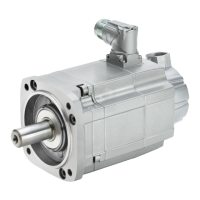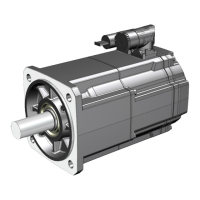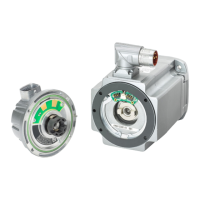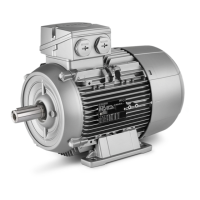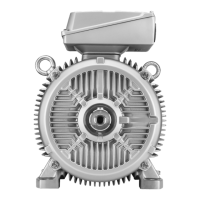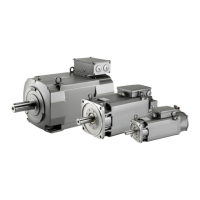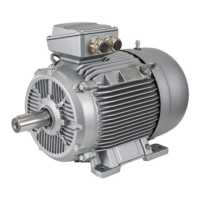The motors are approved for numerous installation and operating conditions. These
conditions such as rigid or vibration-isolated foundation design inuence noise emission,
sometimes signicantly.
3.1.6 Derating factors
Due to the decreasing air pressure in higher installation altitudes, the cooling of the motor
deteriorates. Therefore, reduce the power of the motor as the installation altitude increases.
Multiply the permissible torques or powers by the factors from the following table.
Reduce the torques and powers according to the values determined.
Power derating factors depending on the installation altitude and ambient temperature
Table 3-2 Power derating factors
Installation altitude above
sea level in m
Ambient temperature in °C
30 40 45 50 55
1000 1.05 1 0.95 0.89 0.84
2000 1 0.95 0.86 0.8 0.73
3000 0.95 0.89 0.76 0.69 0.62
4000 0.89 0.84 0.65 0.57 0.47
Determine the altitude-dependent limit value for the DC link voltage from the limit value listed in Table A
and the reduction factor listed in Table B.
Table A: Limit values for the permissible DC link voltage for 1FK2/1FS2/1FT2 motors at installation altitudes
less than 2000m above mean sea level
Table B: Reduction factors of the permissible DC link voltage depending on the air pressure
Calculating the reduced characteristic curve
M
S1 red
(n) = x
d
• M
S1
(n / x
d
)
M
S1 red
Reduced motor torque for S1 operation at the required installation altitude and ambient temperature
M
S1
Motor torque for S1 operation at ambient temperature of 40°C and
1000m above sea level (see Chapter "Data sheets and characteristic curves" in the Conguration
Manual)
n Motor speed
x
d
Derating factor from the table "Factors for reducing the power..." above
Description of the motors
3.1Technical characteristics and ambient conditions
SIMOTICS S-1FT2 synchronous motors for SINAMICS S120
32 Operating Instructions, 12/2023, A5E50610821B AF
